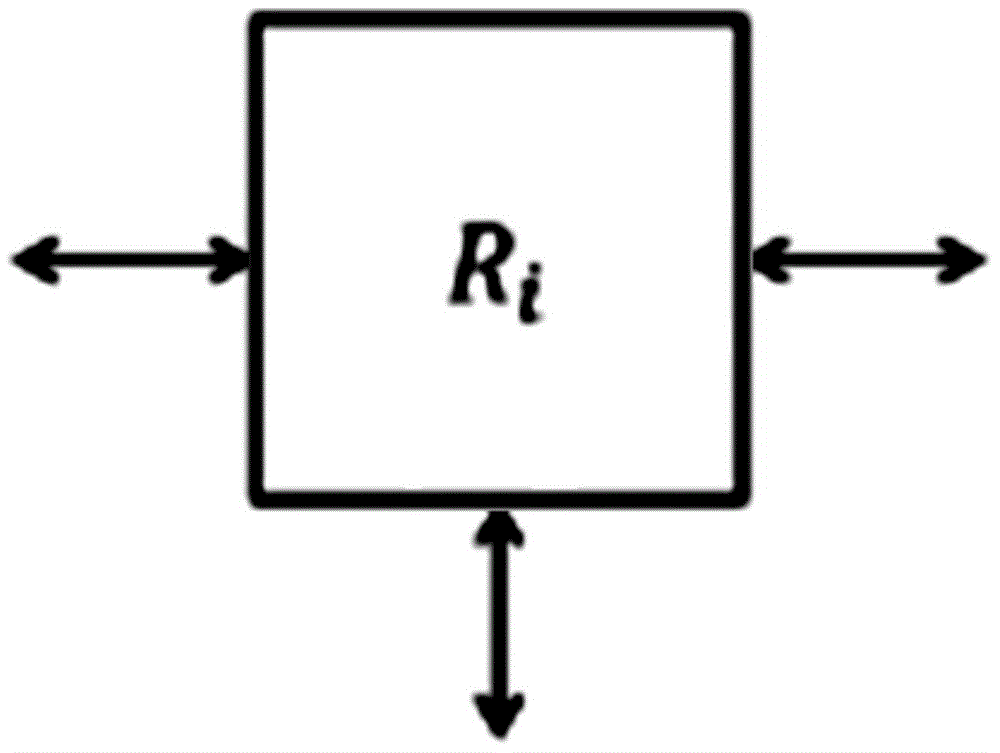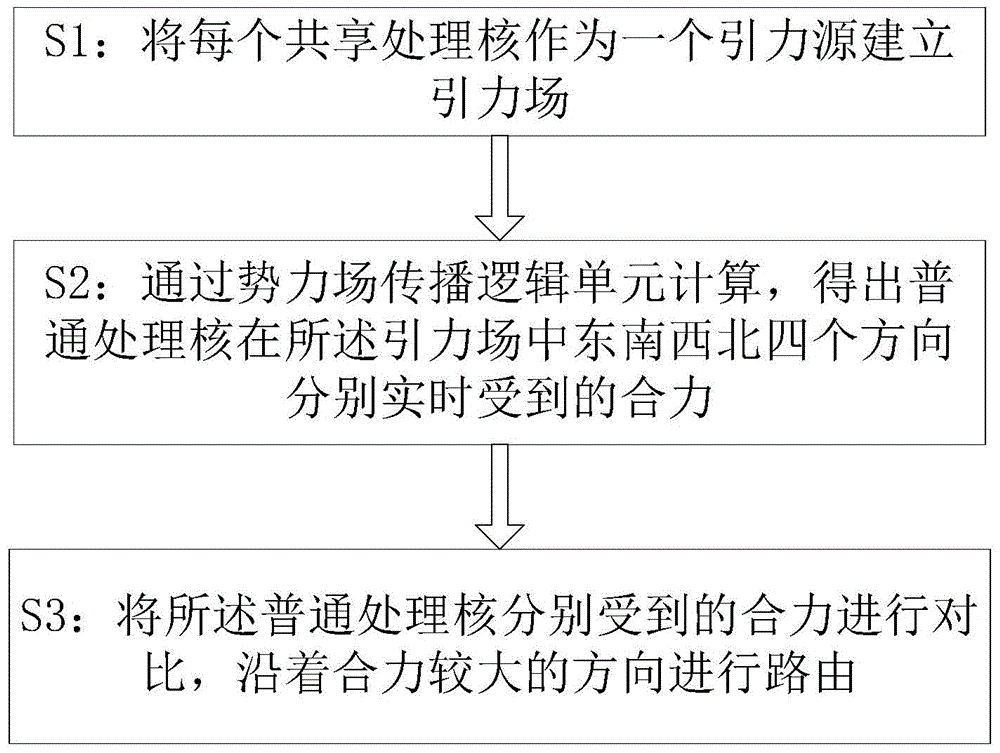Routing mechanism for heterogeneous many-core task scheduling based on artificial potential field
An artificial potential field method and task scheduling technology, applied in digital transmission systems, electrical components, transmission systems, etc., can solve the problem of not fully considering the task processing capacity of shared nodes, network congestion, and task scheduling algorithms that cannot achieve balanced use of shared resources and other issues to achieve the effect of preventing jitter, reducing congestion, and improving performance
- Summary
- Abstract
- Description
- Claims
- Application Information
AI Technical Summary
Problems solved by technology
Method used
Image
Examples
Embodiment 1
[0036] A routing mechanism for heterogeneous many-core task scheduling based on the artificial potential field method described in the present invention, this mechanism is mainly used in heterogeneous many-core structures, NOC (Network-on-Chip, network on chip) Internet dynamic allocation common How to select shared processing cores (heterocores) for processing cores (common cores), such as image 3 As shown, it includes the following steps:
[0037] S1: The present invention introduces the artificial potential field method, and uses each shared processing core as a gravitational source to establish a gravitational field. In the gravitational field, the shared processing cores and ordinary processing cores are uniformly divided into arrays, and the lines between them form a network A lattice framework, so there may be multiple sources of gravity in the gravitational field, which attract other common processing cores to visit;
[0038]S2: Each of the common processing cores in...
Embodiment 2
[0041] On the basis of the routing mechanism for heterogeneous many-core task scheduling based on the artificial potential field method described in Embodiment 1, the step S1 specifically includes: determining the size of the gravitational source according to the parameters of the shared processing core, The law of the propagation direction of the force in the gravitational field is stipulated, and the propagation attenuation rule of the force in the gravitational field is established.
[0042] Such as Figure 4 As shown, the step S2 specifically includes: preferably, the shared processing core transmits force field data packets in the four directions of the gravitational field to the southeast, northwest, and the transmission of force is through the transmission of the force field data packets in this embodiment. To express, the normal processing core or other shared processing cores will receive the force field data packet and continue to send it, and the north, south, west,...
Embodiment 3
[0083] On the basis of the routing mechanism for heterogeneous many-core task scheduling based on the artificial potential field method described in the above embodiments, a specific embodiment is provided, such as Figure 7 As shown, there are four shared processing cores in the figure, which are used as four gravitational sources, respectively gravitational sources A, B, C, D, and their sizes are all 10. In the preferred embodiment, the "propagation of force The law of direction” is specifically: the force is first transmitted in the X dimension, and then transmitted in the Y dimension, so only in the line with the gravitational source, there is left or right force, otherwise there is only pulling force in the upper and lower directions, and the force field The establishment is first the x-axis and then the y-axis, then the direction of routing packets is the first y-axis, and then the x-axis direction.
[0084]The preferred "propagation attenuation rule of force in the grav...
PUM
 Login to View More
Login to View More Abstract
Description
Claims
Application Information
 Login to View More
Login to View More - R&D
- Intellectual Property
- Life Sciences
- Materials
- Tech Scout
- Unparalleled Data Quality
- Higher Quality Content
- 60% Fewer Hallucinations
Browse by: Latest US Patents, China's latest patents, Technical Efficacy Thesaurus, Application Domain, Technology Topic, Popular Technical Reports.
© 2025 PatSnap. All rights reserved.Legal|Privacy policy|Modern Slavery Act Transparency Statement|Sitemap|About US| Contact US: help@patsnap.com



